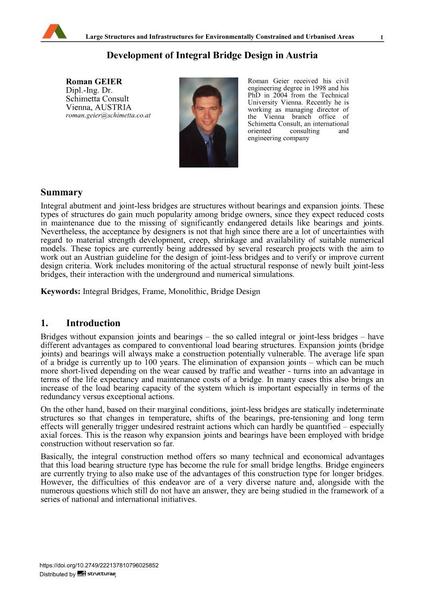Development of Integral Bridge Design in Austria

|
|
|||||||||||
Bibliographic Details
| Author(s): |
Roman Geier
|
||||
|---|---|---|---|---|---|
| Medium: | conference paper | ||||
| Language(s): | English | ||||
| Conference: | IABSE Symposium: Large Structures and Infrastructures for Environmentally Constrained and Urbanised Areas, Venice, Italy, 22-24 September 2010 | ||||
| Published in: | IABSE Symposium Venice 2010 | ||||
|
|||||
| Page(s): | 552-553 | ||||
| Total no. of pages: | 8 | ||||
| Year: | 2010 | ||||
| DOI: | 10.2749/222137810796025852 | ||||
| Abstract: |
Integral abutment and joint-less bridges are structures without bearings and expansion joints. These types of structures do gain much popularity among bridge owners, since they expect reduced costs in maintenance due to the missing of significantly endangered details like bearings and joints. Nevertheless, the acceptance by designers is not that high since there are a lot of uncertainties with regard to material strength development, creep, shrinkage and availability of suitable numerical models. These topics are currently being addressed by several research projects with the aim to work out an Austrian guideline for the design of joint-less bridges and to verify or improve current design criteria. Work includes monitoring of the actual structural response of newly built joint-less bridges, their interaction with the underground and numerical simulations. |
||||
| Keywords: |
frame bridge design integral bridges Monolithic
|
||||

